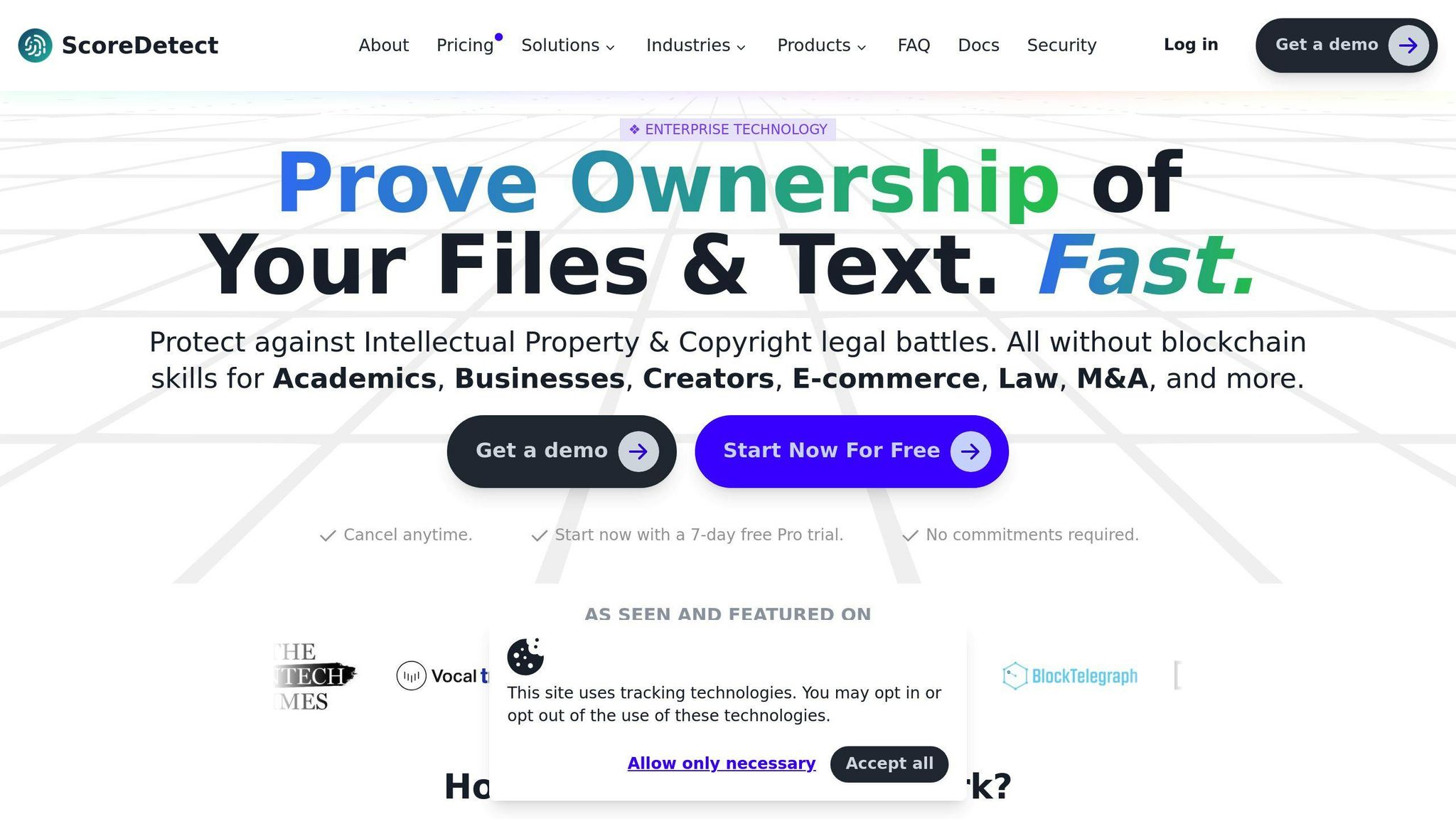AI-generated audio is getting scary good at fooling people. Here’s what you need to know:
- AI can create convincing voice fakes with just 1 minute of audio
- Scammers have used AI voice clones to steal $243,000
- Current detection tools are hit-or-miss
Researchers are working on solutions:
| Method | How It Works |
|---|---|
| Acoustic sensing | Analyzes sound wave patterns |
| Metadata analysis | Examines hidden file info |
| Artifact detection | Looks for AI manipulation signs |
| Machine learning | Uses AI to catch AI fakes |
But there’s a catch: These tools aren’t perfect yet. Mislabeling real audio as fake could have serious consequences.
ScoreDetect offers one approach:
- Uses blockchain to timestamp original content
- Can’t detect AI fakes on its own
- Works fast (about 3 seconds to create certificates)
- Best used with other detection tools
Bottom line: We’re in a cat-and-mouse game with AI audio fakes. The stakes? Our ability to trust what we hear.
Related video from YouTube
1. ScoreDetect

ScoreDetect uses blockchain to verify content authenticity. It’s not made for audio fake detection, but it can help protect audio content from forgery.
How Accurate It Is
ScoreDetect doesn’t spot fakes directly. Instead, it creates a tamper-proof record of original content using blockchain timestamping. For audio files, this means:
- You can certify original recordings
- You can spot changes made after certification
But here’s the catch: ScoreDetect doesn’t analyze the audio itself. So it can’t catch AI-generated fakes made from scratch.
How Fast It Works
ScoreDetect is QUICK:
| Feature | Speed |
|---|---|
| Certificate Creation | ~3,000 milliseconds |
| Timestamping Interval | ~3,000 milliseconds |
This speed lets you protect audio content almost instantly as you create or publish it.
How It Fits with Other Tools
ScoreDetect can be part of your audio forgery detection toolkit:
- Use it to certify your original audio files
- Pair it with tools that analyze sound for signs of tampering
- Add AI-based detectors for a multi-layer defense
Help for Users
ScoreDetect offers:
- Zapier integrations with 6000+ apps
- A WordPress plugin
- API access for developers
- Basic email and live chat support (full support for enterprise users)
ScoreDetect isn’t a one-stop shop for catching AI audio fakes. But it’s a solid start for content authentication. It adds an extra security layer to your other detection methods.
sbb-itb-738ac1e
Good and Bad Points
Let’s break down ScoreDetect’s pros and cons for AI audio forgery detection:
| Strengths | Weaknesses |
|---|---|
| Quick certificate creation (~3,000 ms) | Doesn’t analyze audio content |
| Blockchain timestamping for tamper-proof records | Can’t spot AI-generated fakes from scratch |
| Supports various content types, including audio | Not built for audio forgery detection |
| Zapier integration with 6000+ apps | Needs other tools for full protection |
| API access for developers | Limited use as standalone solution |
| WordPress plugin available | Basic support for non-enterprise users |
ScoreDetect is fast and secure, but it’s not a one-stop shop for AI audio forgery detection. It’s great for proving when you created an audio file, but it can’t tell if someone’s messed with the content.
Think of it like this: ScoreDetect is like a notary for your files. It can say, "Yep, this podcast episode existed at this exact time." But if someone uses AI to make a fake episode with your voice? ScoreDetect won’t catch that on its own.
To really protect against AI audio fakes, you’ll want to pair ScoreDetect with tools that can analyze the audio itself. It’s like having a security guard (ScoreDetect) and a detective (audio analysis tools) working together. One watches the door, the other investigates suspicious activity inside.
Bottom line? ScoreDetect is useful, but it’s just one piece of the puzzle in fighting AI audio forgeries.
Wrap-up
AI-generated audio is shaking things up. It’s causing problems in politics, finance, and beyond. Why? Because it’s getting harder to tell what’s real and what’s fake.
Here’s the deal:
- In 2019, fake CEO audio led to a $243,000 fraud. Ouch.
- NPR tested detection tools. Result? They messed up, calling real audio fake and vice versa.
- The FTC is on it. They’re running a challenge to find ways to fight audio deepfakes.
Tools like ScoreDetect help, but they’re not perfect. They can tell you when an audio file was made, but not if it’s been messed with.
"If we label a real audio as fake, let’s say, in a political context, what does that mean for the world? We lose trust in everything." – Sarah Barrington, UC Berkeley
So, what can we do?
1. Use multiple tools and get expert help.
2. Check where the audio came from and why it exists.
3. Keep up with new ways to spot fakes.
It’s a cat-and-mouse game. As fake audio gets better, we need to get better at catching it. The stakes? Just our ability to trust what we hear. No big deal, right?

